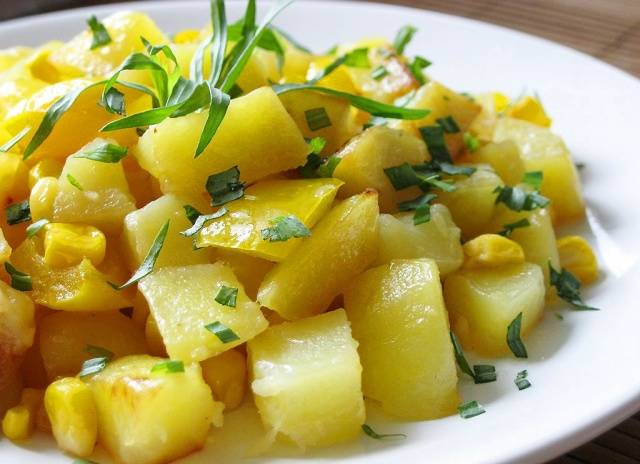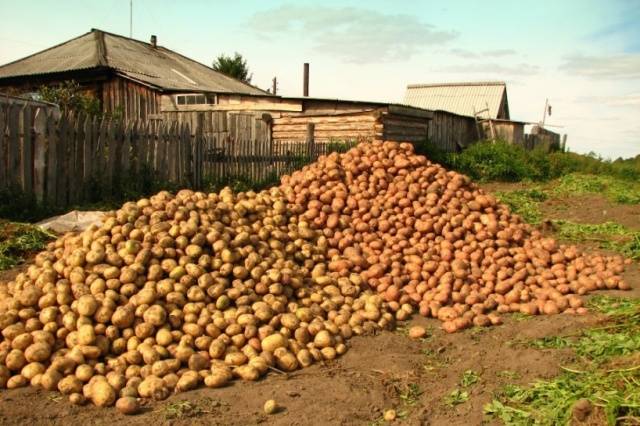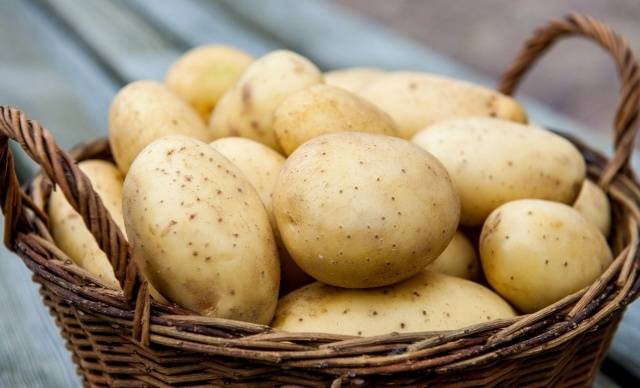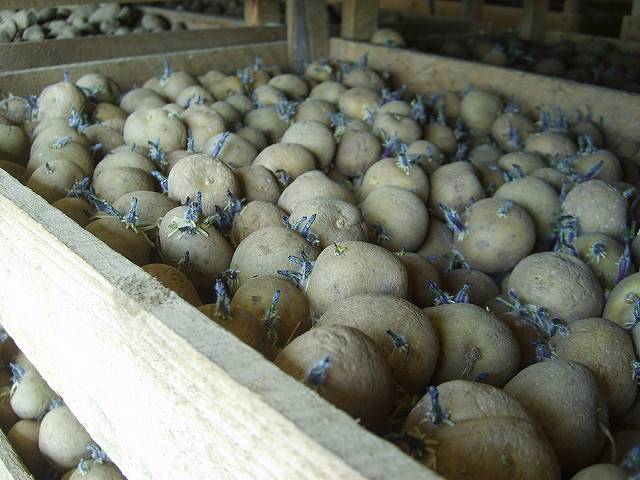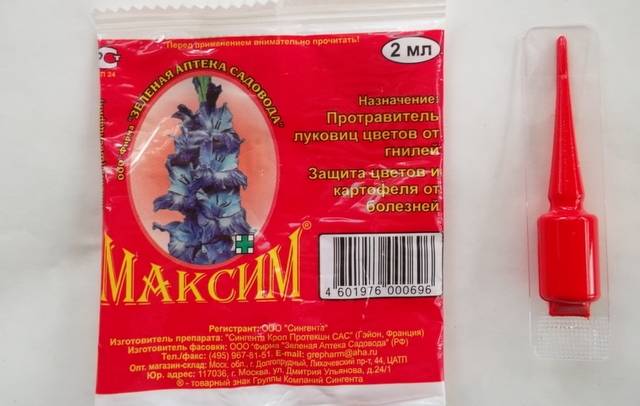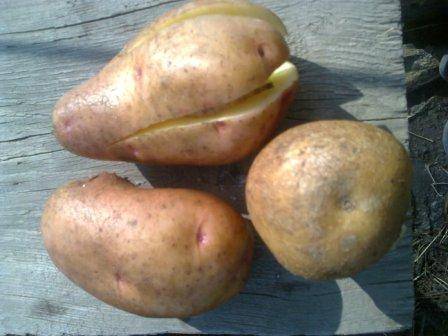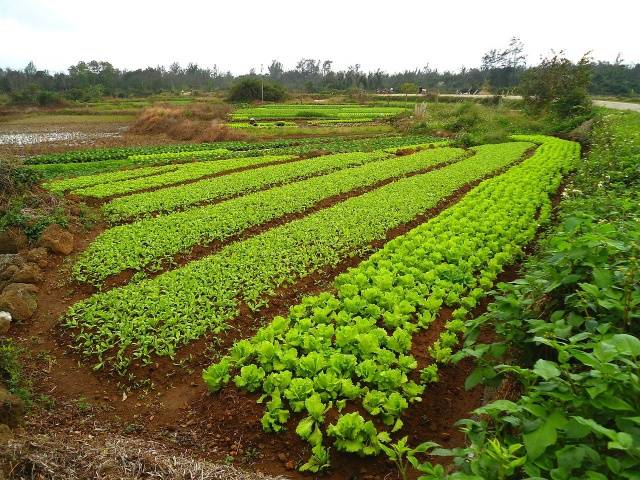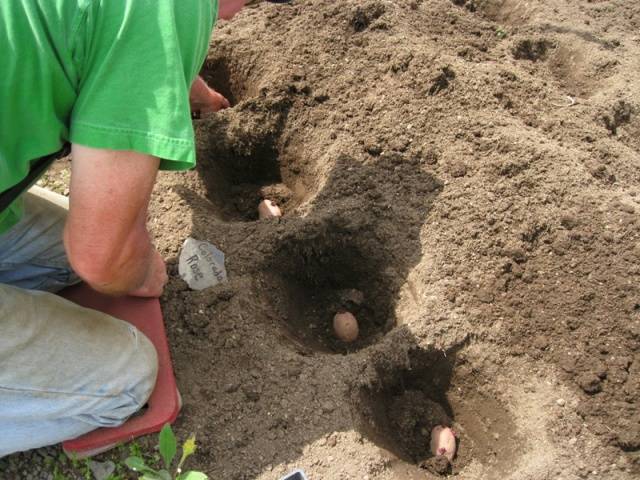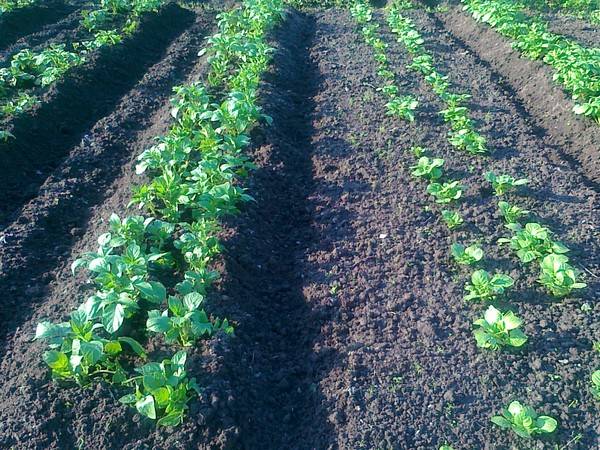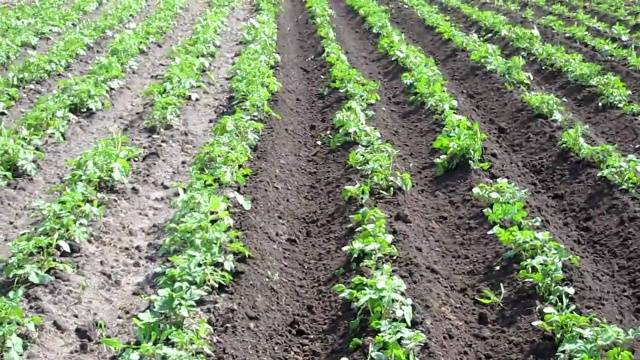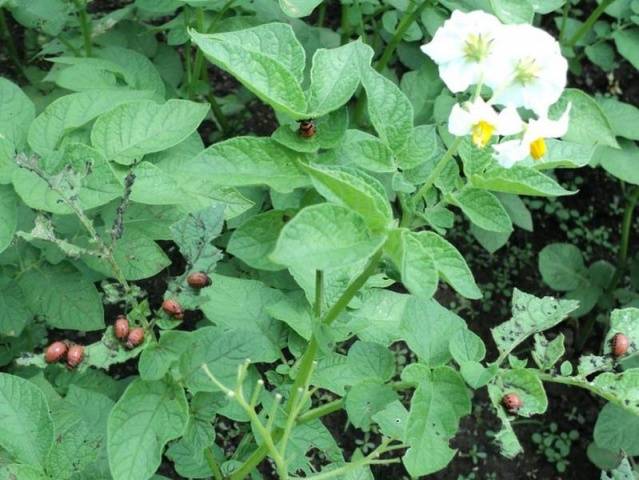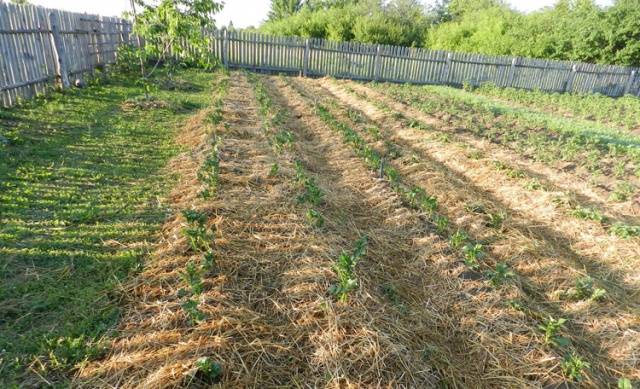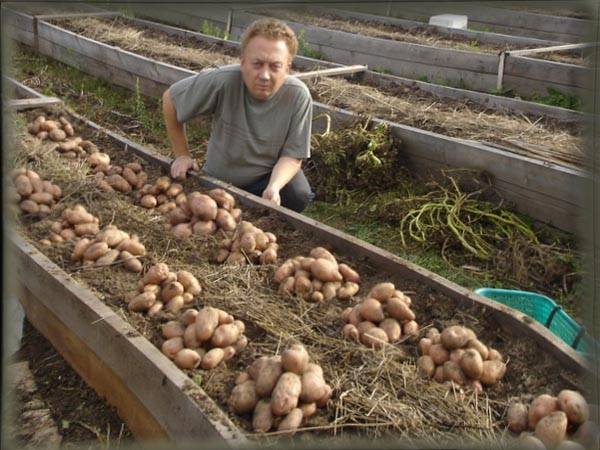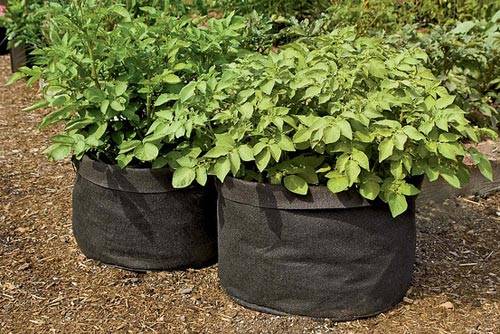Content
Today, potatoes are one of the most widespread vegetable crops in Russia, and who can imagine now that no one even heard about it 300 years ago. And on the American continent, which is the birthplace of potatoes, the indigenous population has grown it not even hundreds, but thousands of years. Therefore, it is clear that we cannot do without potatoes in the next hundreds of years. True skilled chefs are able to cook about 500 dishes from potatoes, without ever repeating themselves. And how many auxiliary substances are prepared with the use of potatoes - this is starch, and alcohol, and glucose, and molasses and much more.
Therefore, people are experimenting with planting potatoes, trying to come up with new interesting ways planting potatoes and care for him in the open field. Some are guided by record harvests, while for others it is important to minimize labor costs for caring for potatoes. Moreover, many so-called new methods are only well-forgotten old ones. This article will analyze in detail both the traditional method of planting and caring for potatoes, and highlight new, sometimes very unusual ways of growing this beloved crop.
Factors affecting potato yield
Everyone wants potatoes not only to grow, but also to please with their yield. So that at least enough for myself and my family for the season, and even left for planting next year. What does getting a good harvest of potatoes depend on?
Potato variety
The varieties are very different. Each has its own pros and cons. And if some of the advantages have exactly the yield, the other may have a wonderful taste, but at the expense of yield. This factor must be taken into account first of all, otherwise, no matter how hard the gardener tries, nothing will work. This is already embedded in the tubers at the genetic level.
The quality of tubers for planting
Potato tubers differ in the quality characteristics of seed material from mini-tubers to the second reproduction. See the table below.
| Name of seed potato | Characteristic | Method of obtaining |
|---|---|---|
| Mini tubers | Pure seed material for planting potatoes | Obtained in the first year of growing varietal potatoes from seeds |
| Super super elite | Pure seed material for planting potatoes | Obtained the next year after planting mini-tubers |
| Superelite | High quality seed material | Obtained the next year after the landing of the super elite |
| Elite | The most productive potato planting material | Obtained the next year after the landing of the super elite |
| First reproduction | The most common potato planting material | Obtained the next year after the landing of the elite |
| Second reproduction | Can serve as the basis for a good potato harvest | Obtained the next year after planting the first reproduction |
In specialized stores, the elite and the first reproduction are most often offered for sale as seed. This is at its best. In the markets, you can often find the second reproduction and further. As you can easily understand from the above, that no matter how you care for and fertilize the potatoes, if they are grown from poor quality planting material, nothing good should be expected from them. This is one of the main reasons for all the failures of most gardeners with the potato crop.
Tuber size for planting
Something also depends on the size of the potato planting material. For some reason, many people think that the larger the potato, the more harvest it will give. This is not entirely true. The fact is that large tubers when planted give a lot of small tubers, but a pea-sized trifle, on the contrary, can give one or two, but large tubers. That is why experts recommend taking medium-sized tubers for planting about the size of a chicken egg, so that both the size and number of future tubers are at a good level.
Preparation of planting material
What a few decades ago was not taken into account by anyone, now they are trying to master everything, or almost all gardeners. To get a good harvest of potatoes, tubers need special preparation before planting. It includes both protection from disease and germination for an earlier harvest and, often, rejuvenation of the planting material.
Soil preparation
This is exactly the factor that has been taken into account by all gardeners from time immemorial, but it is also the most laborious. It is for its simplification that various techniques are currently being invented.
Potato care
Traditional, well-known work, which includes, in addition to planting itself, also weeding, hilling, watering, feeding, processing against pests and diseases and harvesting. So many new methods of growing potatoes are trying in any way to remove or at least facilitate many of these jobs.
Traditional methods of planting and caring for potatoes
Some time ago, it was considered traditional to get several buckets of potatoes from the cellar in the spring and immediately go to the prepared area and plant them. Now every self-respecting gardener necessarily begins to prepare potatoes for planting about a month or even two before planting.
Preparatory procedures
It is necessary to select tubers by size for small (25-45 g), medium (45-75 g) and large (over 75 g). In the future, when planting, it is necessary to plant each size separately so that the seedlings are more uniform. This will ensure that the bushes develop at the same time and will make it easier to care for them. In addition, large tubers can be divided into several parts during planting to obtain more planting material.
How is it done? Selected tubers are laid out in boxes in one layer on a film, sprayed with warm water and covered with the same film so that minimal moisture is maintained inside. The boxes are exposed to light.
The temperature at which vernalization is carried out can be from + 10 ° C to + 20 ° C. It is advisable to turn the potatoes every few days. The duration of vernalization can be from 2 weeks to 2 months, depending on your conditions.
In the process of greening, sprouts begin to wake up on the tubers. And here you can select all diseased tubers. They differ in that the sprouts on them are very thin, threadlike, or, in general, they are absent.It is useless and even harmful to plant such potatoes - there will be no sense from it, and it is quite capable of infecting neighboring bushes.
Disinfection of tubers can be done in different ways:
- Soaking in garlic infusion... To prepare it, dissolve 100 g of crushed garlic in a bucket of water. Selected potatoes are soaked in this solution overnight.
- Soaking in a solution of biogenic fungicide "Maxim"... Enough about 2 hours.
- Soaking in a solution consisting of 0.5 g of potassium permanganate, 15 g of boric acid, 5 g of copper sulfatewhich dissolve in 10 liters of water. About one to two hours is enough.
Treatment of tubers with a solution of complex fertilizers mixed with microelements also gives a certain increase to the yield. To do this, 400 g of complex fertilizer must be diluted in 10 liters of water. Keep the tubers in the solution for about one hour, dry and plant.
Cutting the tubers is also a very interesting way to get a significant increase in the yield. Potato tubers can be cut across, leaving only about 1.5 cm at the very end. Or you can make a shallow cut along the entire diameter.
To make it convenient, you can put a small board under the knife next to the tuber, then the process will accelerate and you can not be afraid to cut the whole potato.
Interestingly, this technique is even more effective than the usual cutting of tubers into several parts. The only caveat is that the incision is best done before vernalization.
Preparing the soil for planting potatoes
Potatoes will give maximum yield on breathable and loose fertile soils. Therefore, soil preparation for planting potatoes usually begins in the fall. Traditionally, the future potato field is plowed with a tractor, a motor-plow or manually with a shovel. At the same time, rotted manure is introduced.
In recent years, the method of sowing a field for potatoes in autumn with siderates - rye, mustard and others - has become widespread. In the spring they are mowed and potatoes are planted right in them. This allows you to save on manure and obtain soil suitable for planting potatoes.
Planting potatoes
There are three main ways to plant potatoes:
- Smooth;
- Ridge;
- Trench.
Smooth
The most traditional way of planting potatoes. Small holes are dug, 9-12 cm deep, in which tubers are stacked one by one. The distance between standard tubers of average size is 25-30 cm - for early varieties, 30-35 cm - for later varieties.
Can be planted:
- Rows with the same distance of about 50-70 cm between them.
- By square-nested scheme, 60x60 cm, suitable only for late and bulky potato bushes. For everyone else, it is unprofitable if there is not enough land for planting.
- Double ribbons from two rows. It is this method that gives the best yields. Between the rows in the tape, 50-60 cm remains, and the passage between the belts is 80-90 cm.
In this case, you can plant the tubers a little denser, each bush will have enough space for growth.
Ridgevoy
This method is suitable for northern regions, as well as for those areas where there is heavy, too moist soil. At a distance of 70 cm from each other, ridges 15-20 cm high are raked with a hoe, into which the tubers are planted. Due to better warming up by the sun and airing, potatoes grow better.
Trench
This method is best for southern regions with hot, dry climates. For planting potatoes, trenches are dug, 10-15 cm deep, with the same distance of 70 cm between them. Potatoes are laid in the trenches and covered with earth. This traditional method of planting potatoes has been improved a lot in recent years. And most likely, they returned to what it was a hundred years ago.
Trenches for planting potatoes have been prepared since autumn and are filled with all kinds of organic matter, plant waste, straw mixed with decomposed manure. In the spring, as early as possible, potato tubers are planted, covered with the remaining soil and covered with straw on top. This combined method allows you to get earlier and more abundant harvests without additional fertilizing. The tubers use nutrients from the decaying organic matter from the trench.
Potato planting care
Basic procedures for caring for potatoes after planting include:
- Watering - their frequency depends on weather conditions. Watering is usually mandatory 1-2 weeks after germination, during flowering and after flowering in hot and dry weather.
- Top dressing - are needed three times per season, the first with nitrogen-containing fertilizers, the second and third during budding and flowering with phosphorus-potassium fertilizers.
- Hilling - carried out several times as the potato bushes grow in height. It helps to protect the bushes from frost in the initial stage of growth, removes weeds, retains moisture and stimulates additional growth of shoots and tubers.
- Zprotection from pests and diseases... Already at the stage of planting tubers, ash, onion husks and eggshells can be placed in the holes. These funds are able to scare off the Colorado potato beetle, bear and wireworm. But the Colorado potato beetle cannot be dealt with in one go. If you do not want to use chemistry when growing homemade potatoes, then you can try sprinkling the bushes with a solution of tar - dilute 100 g of tar in 10 liters of water and leave for 2 hours.
Regular mechanical harvesting of the beetle and its larvae is also effective.
Unconventional ways of planting potatoes
There are many such methods, and every year restless gardeners try to come up with something else new. With these methods of planting potatoes, they try to minimize and care for them.
Planting potatoes under straw or in straw
The popularity of this method is growing every year, despite the fact that it has both active supporters and equally ardent opponents. The main advantage of the method is less effort expended on growing potatoes, plus an improvement in the structure of the land after such planting. Therefore, it is especially often used on heavy or virgin lands.
There are also disadvantages - many say that tubers are often damaged by mice, and not everyone has the required amount of straw for large potato plots.
Usually, the tubers are laid out directly on the ground, slightly pressing them, and covered with a 10-20 cm layer of straw. When shoots appear through the straw, it is reported, this is done several times during the summer. This method does not require additional watering, as well as feeding. Hilling is done with straw. Instead of straw, you can also use hay, grass cuttings and other plant waste.
An important modification of this technique is that it is combined with the trench method of growing potatoes. Today this method is considered the most versatile.
Watch the video below - material on planting potatoes under straw.
No-till method
This technique resembles the traditional one, but it attempts to greatly facilitate labor and time in preparing the land and planting potatoes. Potatoes are placed directly on loose soil prepared in autumn, fertilized with ash and lightly watered. Then the earth is thrown on it from the adjacent aisles. As the shoots grow, hilling is carried out from the passages with their deepening. The harvest is quite comparable to the traditional one, but less effort is made. Watch a detailed video on how to do this.
Planting potatoes under a black film
You can also use a non-woven black material instead of a film. The material is simply spread on the selected area, fixed at the edges.Then cuts are made into which tubers are laid to the appropriate depth (9-12 cm) and sprinkled with soil. According to the technology, no hilling or weeding is needed. In reality, the bushes bulge out as they grow, and the potatoes turn green, so a little hilling is still necessary. But for early plantings, the method can be interesting. Below you can watch a video about this technique.
Growing potatoes in box beds
This method requires a very laborious initial preparation, but then the care is minimal. First, box beds are built from boards, slate, bricks and everything that is at hand. The principle of their construction is similar to the manufacture of warm beds. Then they are filled with a variety of organic materials mixed with humus. Finally, tubers are planted in them, usually in a checkerboard pattern in two rows. Hilling, weeding and feeding are not required, watering as needed, but usually minimal. It is argued that the yield of potatoes under such conditions is an order of magnitude higher than with the traditional method. The main disadvantage is that the method is only suitable for small landings.
Below you can watch a video on this topic.
Planting potatoes in barrels, buckets, bags and other containers
This method came from the so-called Chinese technology. It stated that only 3-4 tubers can be put on the bottom of the barrel and covered with fertile soil as the shoots grow. By the time the shoots grow to the edges of the barrel and fill it with earth, the entire barrel will be filled with ripe tubers. In fact, tubers grow only in the top layer of the earth, equal to 40-50 cm. And the yield, thus, is similar to the traditional one.
Nevertheless, growing potatoes in all kinds of containers can be successfully used with a shortage of land. Packages or bags of potatoes can be placed on any inconvenience, and thus grow a few more additional buckets of potatoes without much effort. Since weeding, hilling and feeding with this growing method is also not required. Watch the video about this original way of growing potatoes.
Conclusion
As you can see, there are many ways to plant and care for potatoes. It makes sense to try, experiment and judge by the results which one is best for you.
